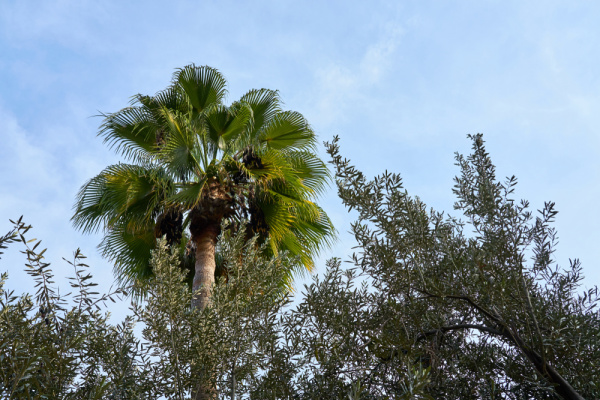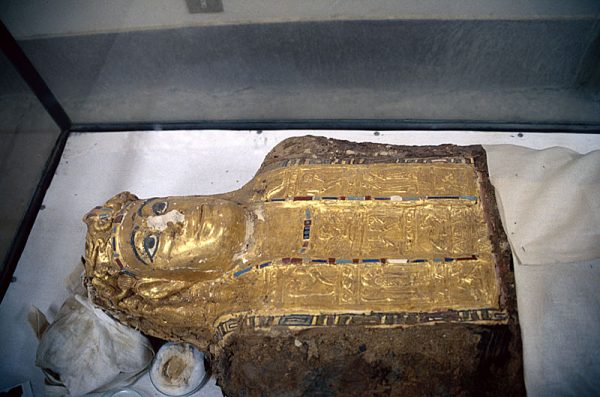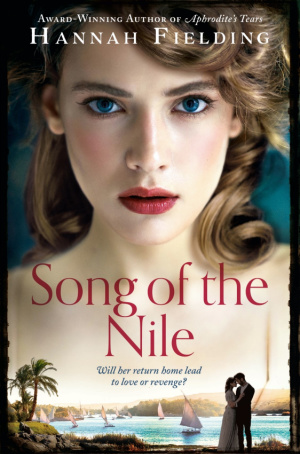The Bahariya Oasis, Egypt
The Bahariya Oasis, Egypt
The Bahariya Oasis, Egypt
-
Hannah
-
Hannah

In my novel Song of the Nile, the heroine visits an oasis in the desert, which, I write, lies ‘in the midst of the burning waste like a green jewel’. I imagine that is how ancient people saw the Bahariya Oasis, situated in the Western Desert some 230 miles southwest of Cairo.
You may think of an oasis as a small refuge in the desert, but this oasis is big, at about 58 miles long and 25 miles wide. It’s a beautiful place, with many hot and cold natural springs and so much greenery: guavas, mangos and olives are grown here, and dates – there are some two million date palm trees.

Palms and olive trees grow at the oasis
Nearby are the White Desert, where nature has sculpted unusual chalk rock and limestone formations, and the Black Desert, with its dark sands and huge black mounds reaching up to the sky. At the oasis itself there are plenty of interesting land formations to see as well, such as the Gebel El-Dist or Pyramid Mountain, a natural mound in the iconic shape of the pyramid where amazing dinosaur bones have been discovered, and Gebel al-Ingleez or the English Mountain, so called because a British officer used this as a vantage point during the First World War – the 360-degree views from here are spectacular.

The Gebel El-Dist
The oasis is undeniably beautiful, but the history of this place is also a big draw for visitors (agriculture has traditionally been at the core of the local economy, but tourism has been growing in recent years). The Waḥātī people (meaning ‘of the desert’) are descended from those who lived in Bahariya during Pharaonic times.
A discovery in the 1990s is what really put Bahariya on the map for people outside Egypt. Egyptian archaeologist Zahi Hawass and his team found what has become known as the Valley of the Golden Mummies. Excavations at this burial site uncovered 250 mummies that have been dated to the Greco-Roman period, around 2,000 years ago. It is believed that many, many more are buried on the site.
What makes these mummies really amazing finds, aside from their sheer number, is how well preserved they are. Some wore a gilded mask and waistcoat (the latter decorated to show major Ancient Egyptian deities) – hence the name Valley of the Golden Mummies.

A mummy found in the Valley
Also found buried with the mummies were jewellery, statues, pottery, jars and coins dating to the Ptolemaic era; one coin depicts Cleopatra VII, the last ruler of the Ancient Egyptian civilisation. It seems that people of wealth chose to be buried here, likely because it was very close to the Temple of Alexander the Great.
Mr Hawass – seen by some as a sort of modern-day Howard Carter – has written evocatively of what he saw when he first entered the tombs. The following particularly captured my imagination:
Each mummy is as distinctive as the individual it represents: no two are alike. Some are decorated with painted scenes on plain cartonnage; others are covered in gold. The one uniting characteristic is that they are all smiling. In one corner lay a particularly touching pair: a woman lying beside her husband with her head lovingly turned toward him. It seems that the husband had died before the wife and she had asked her family to bury her next to him, where she could gaze at him forever. (source)
Beautiful, don’t you think?
I hope the Bahariya Oasis will be on your itinerary if you are able to visit Egypt. It really is a ‘green jewel’ in the desert.

Song of the Nile: available to buy now
Photo credits: 1) Anton_Ivanov/Shutterstock; 2) Arthur Lomarainen/Shutterstock; 3) Ahmedherz/Wikipedia; 4)
Roland Unger/Wikipedia.